Today I want to share why you need to take the time to track your grant pipeline (and by that I mean all the opportunities you want to apply for, the ones you have applied for, the ones you’ve been awarded, and even the ones you had rejected).
So much of the grant writing advice out there focuses on how to write a strong proposal (and yes that matters), but it ignores other actions you need to take to be strategic (. . . and SUCCESSFUL!!) with grants.
And one of these actions is tracking your grant pipeline.
So the 3 reasons you need to do this are for:
- Data
- Deadlines, and
- The Big Picture
Before we jump in, if you haven’t downloaded your FREE Roadmap to Grant Funding yet, make sure you do!
Track your grant pipeline for data
The first reason you need to track your entire grant pipeline is that it’s a valuable source of data.
When you keep track of your awards and rejections, along with their amounts and information about the grantmaker, you will see patterns emerge over time that will help you make better decisions in the future.
For example, you might find that you do very well with asks in the $35k-$50k range and not as well with asks under $35k and over $50k. This is important to know!
It might be that the lower amounts you’re not awarded because they were too low, and the grantmaker didn’t think that with the funding you asked them for and the other funds you have allocated for the program you’d be able to actually deliver the program well.
For higher requests, it might be that they aren’t sure you have the organizational capacity to grow your program as much as you plan.
To understand the patterns you’re noticing, ask the grantmaker! When you receive a grant rejection, politely ask for feedback and add the information you get onto the spreadsheet where you track your entire grant pipeline.
Track your pipeline for deadlines
The second reason you need to track your entire grant pipeline is to stay on top of deadlines. If you keep all the grants you want to apply for in one section of your grant pipeline spreadsheet, then you can quickly see when the deadlines are. You can get a sense of whether you need to start work early on one opportunity because the same week it’s due, there is another grant due.
You’ll also want to keep track of LOI due dates and award announcement dates. If there are lulls in the calendar, when no grants on your list have due dates, you can take that time to apply for opportunities that have rolling applications.
Track your pipeline to understand the big picture
The third reason you need to track your entire grant pipeline is to keep the big picture in mind. You need to know at all times how much revenue you have coming in for each of your programs, so you know how much more you need to ask for.
(A bonus piece of advice: you should aim to apply for about 3x the funding you need for each program because you’re not going to win every one you apply for.)
Tracking your grant pipeline is one step in building a grant strategy. If you’re ready to learn more and increase your revenue from grants, download The Roadmap to Grant Funding today. It’s FREE! →







